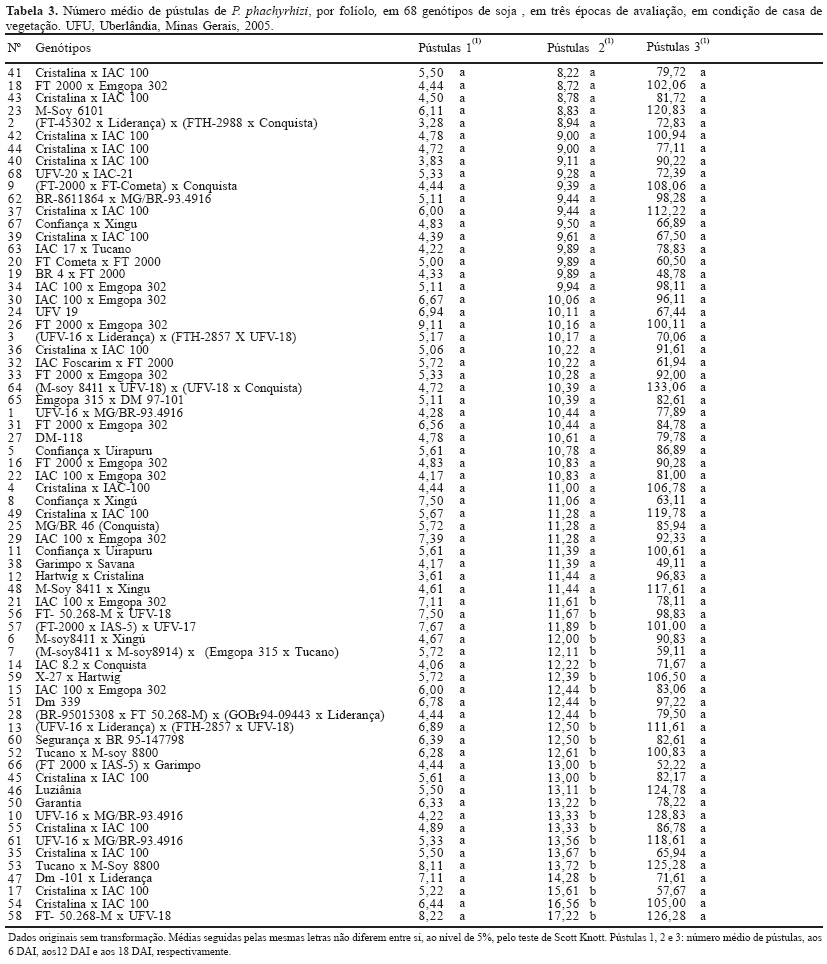This study evaluated the reaction of 68 soybean genotypes for partial resistance to soybean rust caused by Phakopsora pachyrhizi. The experiment was done in Uberlândia, MG, under greenhouse conditions from December 2004 to February 2005, consisting of three evaluation times. The following resistance characteristics were evaluated: average latent period (PLM), average number of pustules per leaflet and rust severity. The area under the disease progress curve (AACPD) was calculated based on the variables average number of leaflet pustules and severity. Analysis of variance and comparison of the averages by the Scott Knott test were done at 5% probability. Significant differences were found among the genotypes for the average number of leaflet pustules and rust severity twelve days after inoculation. Differences were also found for area under the disease progress curve. It is assumed that partial resistance (RP) to soybean Asian rust should be evaluated under average epidemics conditions. This evaluation was done on the second time with all characters evaluated. Genotype grouping by principal components analysis allowed the discrimination of genotypes with partial resistance to the disease. Three genotypes (number 4, 41, and 42), referring to parents 'Cristalina' and 'IAC 100' showed high levels of partial resistance to soybean rust.
Phakopsora pachyrhizi; components of resistance; rust sev




